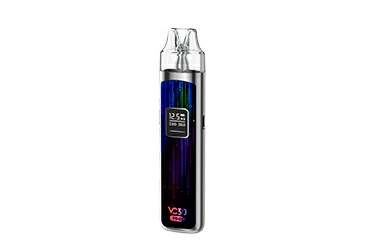Research shows that there are many reasons why teenagers are more likely to smoke e-cigarettes. The influence of advertising and social interaction, the attraction of various flavors of e-cigarettes, and other external factors prompt young people to start smoking e-cigarettes. However, internal personality factors , mental health is a factor that needs more attention.
A recent study published in the journal Addictive Behaviors, “Examining the Prevalence of Nicotine Vaping and Association of Major Depressive Episodes among Adolescents and Young Adults by Disability Type in 2021,” revealed that adolescents with cognitive impairment and mood disorders and young people are more likely to use e-cigarettes.
Based on data from the 2021 National Survey on Drug Use and Health, the study found that 14.2% of people with cognitive impairment had used nicotine in the past month, compared with 9.6% of people without disabilities. Likewise, a link between major depressive episodes (MDEs) and vaping has been found in teens and young adults.
The study’s lead author Gilbert Jim, an associate professor at the Mason School of Public Health, emphasized the importance of additional support and early intervention for those at increased risk from nicotine vaping. This is a point made time and time again by experts in the field, who urge lawmakers to address the root causes of teen vaping rather than focus solely on setting limits.
Addressing the causes of smoking is more important than the consequences
Earlier this year, Australian doctors discussed this with tobacco treatment expert and researcher Dr. Colin Mendelsohn. Many teenagers turn to vaping because they find nicotine relieves stress. “Many studies have found that children with mental illness, poor academic performance, etc. are more likely to vape. Vaping can relieve stress and improve mood. In this survey, 51% said they vape to relieve anxiety. Likewise. The findings also apply to smoking.”
Indeed, the latest data from Household, Income and Labor Dynamics in Australia (HILDA) reveals worrying trends among younger Australians, who experience higher levels of psychological distress and loneliness compared to older age groups. The report, which covers 2001 to 2021 and tracks more than 17,000 people in more than 9,000 households, also includes insights into vape usage for the first time.
The report showed that 15-24 year olds had the highest average distress score in 2021, at 42.3%, compared to 18.4% in 2011. This may be partly related to the use of smartphones and social media. Levels of distress appear to decrease with age, but between 2007 and 2021, the incidence of distress increased by approximately 51% among men and 63% among women.
Despite Australia’s strict vape restrictions, reports show an increase in teen vaping. In 2021, 14.1% of people aged 15 and above have tried vape products. Men were slightly more likely to vape than women, while smokers were significantly more likely to vape.
Banning vapes can sometimes backfire
In other news consistent with the findings above, Ben Youdan, director of Smokefree New Zealand 2025 (ASH), revealed during a recent visit to Australia that New Zealand’s health survey showed a significant 49% decline in adult smoking rates over the past five years. In comparison, Australia’s GDP fell slightly from 12.3% to 11.8% over the same period. Meanwhile, despite Australia’s prescription-based approach, teen vape use has risen to levels similar to those in New Zealand. Youdan believes this is particularly concerning because young Australians only have access to unregulated and illegal products.

















0 Comments